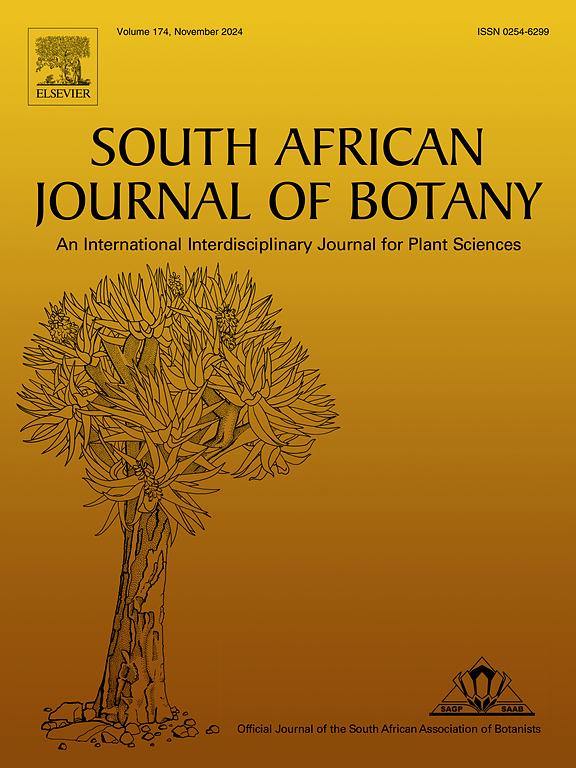Optimising stock plant nutrition to improve rooting success of reseeder and resprouter species of honeybush (Cyclopia spp.) as an emerging indigenous South African herbal tea
IF 2.7
3区 生物学
Q2 PLANT SCIENCES
引用次数: 0
Abstract
Honeybush tea (Cyclopia sp.), an indigenous South African herbal tea, is celebrated for its health benefits. However, the increasing reliance on wild harvesting poses a threat to natural populations, highlighting the necessity for sustainable cultivation. Optimising the propagation process, particularly the rooting success of cuttings, is key to enhancing sustainable production practices. This study aimed to investigate how seasonal variations in mineral nutrient content of stock plants, specifically Cyclopia genistoides (resprouter) and C. subternata (reseeder), affect the rooting dynamics of cuttings. The hypothesis tested was that seasonal nutrient fluctuations significantly impact the rooting success of cuttings and that specific nutrient levels promote better root development. Cuttings from C. genistoides and C. subternata stock plants were collected during different seasons to assess variations in rooting potential. Rooting success was measured based on rooting percent and primary and secondary root formation, while nutrient analysis focused on key minerals like nitrogen, potassium, boron, and iron. Comparative analysis between the two species and across seasons was conducted to identify optimal nutrient ranges for rooting. Autumn-harvested C. subternata cuttings exhibited significantly more primary and secondary roots compared to C. genistoides, with C. subternata producing twice the primary roots and five times more secondary roots. Cyclopia subternata also had higher levels of copper, iron, boron, and magnesium in autumn, whereas C. genistoides showed less nutrient accumulation. Spring-harvested cuttings in both species showed lower rooting success, linked to reduced nitrogen and potassium levels and elevated boron and aluminium concentrations. Overall, C. genistoides rooted more successfully in summer and autumn, while C. subternata demonstrated superior rooting and mineral nutrient accumulation during autumn. Seasonal nutrient variations play a critical role in determining the rooting success of honeybush cuttings. Autumn provides the most favourable conditions for rooting, particularly for C. subternata. Nutrient imbalances, such as low potassium combined with high boron, iron, and aluminium, may inhibit root formation in both species. Ensuring optimal nutrient levels in stock plants is essential for enhancing propagation success. These findings underscore the need for targeted nutrient management in honeybush cultivation, particularly in relation to seasonal variations. This study provides valuable insights for improving sustainable propagation practices by identifying nutrient ranges that promote optimal rooting. Further research is needed to explore the underlying mechanisms of nutrient-affected rooting dynamics and to refine cultivation guidelines for commercial honeybush production.
求助全文
约1分钟内获得全文
求助全文
来源期刊

South African Journal of Botany
生物-植物科学
CiteScore
5.20
自引率
9.70%
发文量
709
审稿时长
61 days
期刊介绍:
The South African Journal of Botany publishes original papers that deal with the classification, biodiversity, morphology, physiology, molecular biology, ecology, biotechnology, ethnobotany and other botanically related aspects of species that are of importance to southern Africa. Manuscripts dealing with significant new findings on other species of the world and general botanical principles will also be considered and are encouraged.
 求助内容:
求助内容: 应助结果提醒方式:
应助结果提醒方式:


